Topaz and sapphire are both precious gemstones, but they differ in their composition, color, and hardness. Sapphire is a variety of corundum mineral and is typically blue or other colors, while topaz is a silicate mineral and can be found in a variety of colors, including yellow, orange, pink, and blue. Sapphire is also generally harder than topaz on the Mohs scale of mineral hardness.
What is topaz?
(Image by John Vossen from Pixabay )
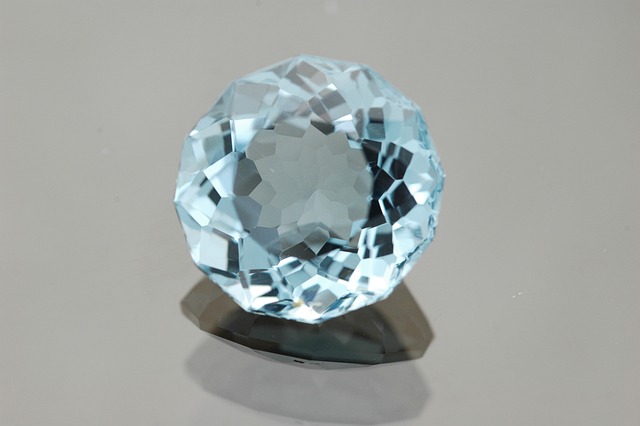
Topaz is a mineral that has been used in jewelry and other decorative objects for centuries. It is typically a yellowish or golden color, but can also be found in shades of orange, pink, red, blue, and green. Topaz is relatively hard, rating an 8 on the Mohs scale of hardness, and it has a good cleavage, meaning that it can be split into thin sheets. In addition to being used in jewelry, topaz is also used as a gemstone in other applications such as ornamentation and industry.
What is sapphire?
(Photo By derrico_jewelry on flickr)
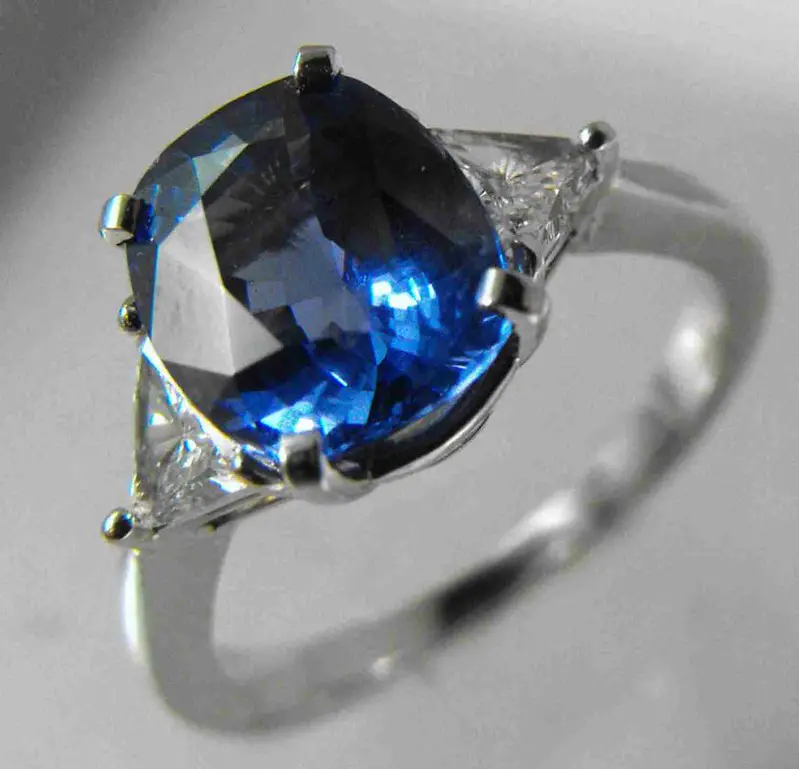
Sapphire is a precious gemstone that has been prized by royalty and commoners alike for centuries. It is the second hardest natural material after diamond and its hardness makes it resistant to scratching and abrasion. Sapphires are found in a wide variety of colors, though blue is the most well-known and desired shade. These stones are typically found in alluvial deposits, meaning they have been transported by water from their site of origin. Sapphires can be mined in several countries around the world, including Sri Lanka, Madagascar, Australia, and the United States.
Topaz Vs. Sapphire – Key differences
Composition: Topaz is a silicate mineral composed of aluminum, fluorine, and silicon, while sapphire is a variety of the mineral corundum, composed of aluminum and oxygen.
Color: Topaz can be found in a variety of colors, including yellow, orange, pink, and blue. Blue topaz is a popular gemstone, but it is often created through heat treatment of yellow or brown topaz. Sapphire is typically blue, but can also be found in other colors such as pink, yellow, green, and purple.
Hardness: Sapphire is generally harder than topaz on the Mohs scale of mineral hardness. Sapphire has a rating of 9 out of 10, while topaz has a rating of 8.
Price: Sapphire is generally more expensive than topaz, especially if it is high-quality and has a deep, rich blue color. Topaz is more affordable, especially if it has been heat-treated to enhance its color.
Symbolism: Sapphire is often associated with wisdom, truth, and faithfulness, and is a traditional birthstone for September. Topaz is associated with strength, healing, and protection, and is a birthstone for November.
Is topaz rare than sapphire?
Topaz is generally more common and less rare than sapphire. Topaz can be found in many locations around the world, including Brazil, Sri Lanka, Nigeria, and the United States. Blue topaz is also frequently produced through heat treatment of less valuable, colorless topaz. In contrast, high-quality sapphires with deep, rich colors are more rare and valuable, especially if they are unheated or have not been treated in any way. Sapphires are often found in mines in countries such as Madagascar, Sri Lanka, and Australia, but not as widely distributed as topaz.
Is topaz a cheap gemstone?
Topaz is generally less expensive than many other gemstones, such as diamonds, rubies, and sapphires. However, the price of topaz can vary depending on several factors, such as the color, size, and quality of the stone. For example, blue topaz is a more popular and valuable color, and larger, higher-quality stones will typically command a higher price. Additionally, topaz can be treated to enhance its color or clarity, which can also affect its price. Overall, topaz is considered a relatively affordable gemstone, making it a popular choice for jewelry and other decorative purposes.
How do you tell a topaz from sapphire?
The key difference between topaz and sapphire is that topaz is a silicate mineral while sapphire is a variety of the mineral corundum. Both minerals have Mohs hardness of 8. Topaz has a specific gravity of 3.49 while sapphire has a specific gravity of 4.00.
Topaz is is hydroxylated aluminum fluorosilicate with the chemical formula Al2SiO4(F,OH)2. The most important commercial topaz is white or pale blue, but it can be found in yellow, pink, orange, red, green, brown and black colors as well. Topaz typically forms in pegmatite and hydrothermal veins. It commonly crystallizes in the orthorhombic system but it can be found in monoclinic or triclinic systems too.
Sapphire is an aluminum oxide with the chemical formula Al2O3 and it can be colored by trace impurities such as iron, titanium and chromium. The most expensive and valuable color of Sapphire is “blue” but Sapphires may be found in yellow, purple, orange, green or pink colors as well; they may even be colorless. Sapphires typically form in metamorphic rocks such as marble or schist; alluvial deposits are also common.
What color topaz is best?
The best color for topaz depends on personal preference and the intended use of the gemstone. Topaz can be found in a wide range of colors, including blue, pink, yellow, brown, green, and colorless. Here are some popular color varieties of topaz:
Blue Topaz: Blue topaz is a popular variety of topaz and can be found in a range of shades, from pale sky blue to deep Swiss blue. The most valuable blue topaz is typically a medium to dark shade of blue, with good clarity and brightness.
Pink Topaz: Pink topaz is another popular variety, and can range from a pale pink to a bright fuchsia color. The most valuable pink topaz is typically a bright, saturated shade of pink.
Imperial Topaz: Imperial topaz is a rare and highly prized variety of topaz, with a rich golden-orange color. The most valuable imperial topaz is a deep, reddish-orange color with good clarity and saturation.
Colorless Topaz: Colorless topaz is sometimes used as a diamond substitute in jewelry, and can have good clarity and sparkle. However, it is typically less valuable than other colored varieties of topaz.
The best color for topaz depends on personal preference and the intended use of the gemstone, as well as the quality and clarity of the stone.
What are the colors of blue topaz?
Blue topaz can be found in a range of shades, from pale to deep blue. The most common shades of blue topaz are:
Sky Blue Topaz: A pale, light blue color, similar to the color of a clear sky.
Swiss Blue Topaz: A medium to dark shade of blue, with a bright, intense color.
London Blue Topaz: A dark, grayish-blue color, with a deep tone and good clarity.
Electric Blue Topaz: A bright, vivid blue color, often achieved through treatment with heat and/or radiation.
The exact color of blue topaz can vary depending on the location of the mine where it was found, and the specific conditions under which it was formed. Additionally, blue topaz can be treated with heat and/or radiation to enhance its color, so the color of the stone may not be entirely natural.
What are the weaknesses of topaz?
Topaz is a relatively hard and durable gemstone, but it is not indestructible and has some weaknesses that should be considered:
Cleavage: Topaz has a distinct cleavage, which means it can break along specific planes if subjected to a strong impact. This makes it vulnerable to damage during cutting, setting, or everyday wear.
Sensitivity to heat: Topaz can be sensitive to high temperatures, and prolonged exposure to heat can cause the color of the stone to fade or change. Heat treatment is commonly used to enhance the color of topaz, but excessive heat can damage the stone.
Irradiation: Blue topaz is often produced through irradiation, which can cause the stone to become brittle and prone to breakage if not properly treated.
Chemical exposure: Topaz can be damaged by exposure to chemicals, such as acids or harsh cleaning solutions. It is important to avoid exposing topaz to chemicals, and to clean it only with mild soap and water.
Topaz is a relatively durable and low-maintenance gemstone, but it should be treated with care to avoid damage or loss of luster.
Featured Image By – Jacek Dylag on Unsplash
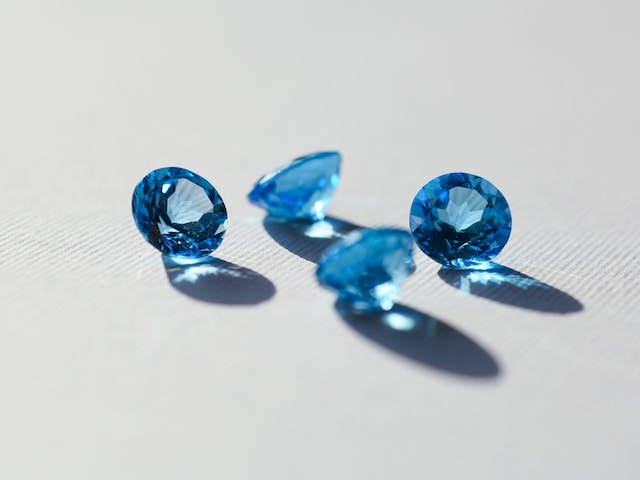

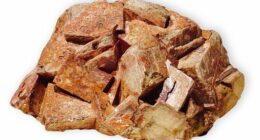
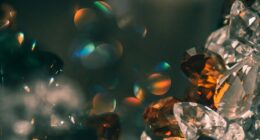





1 comment
Good way of telling, and pleasant piece of writing to get facts about my presentation focus, which
i am going to present in college.